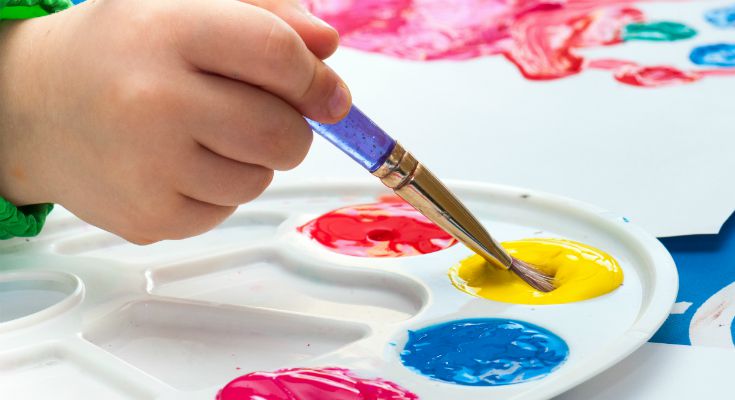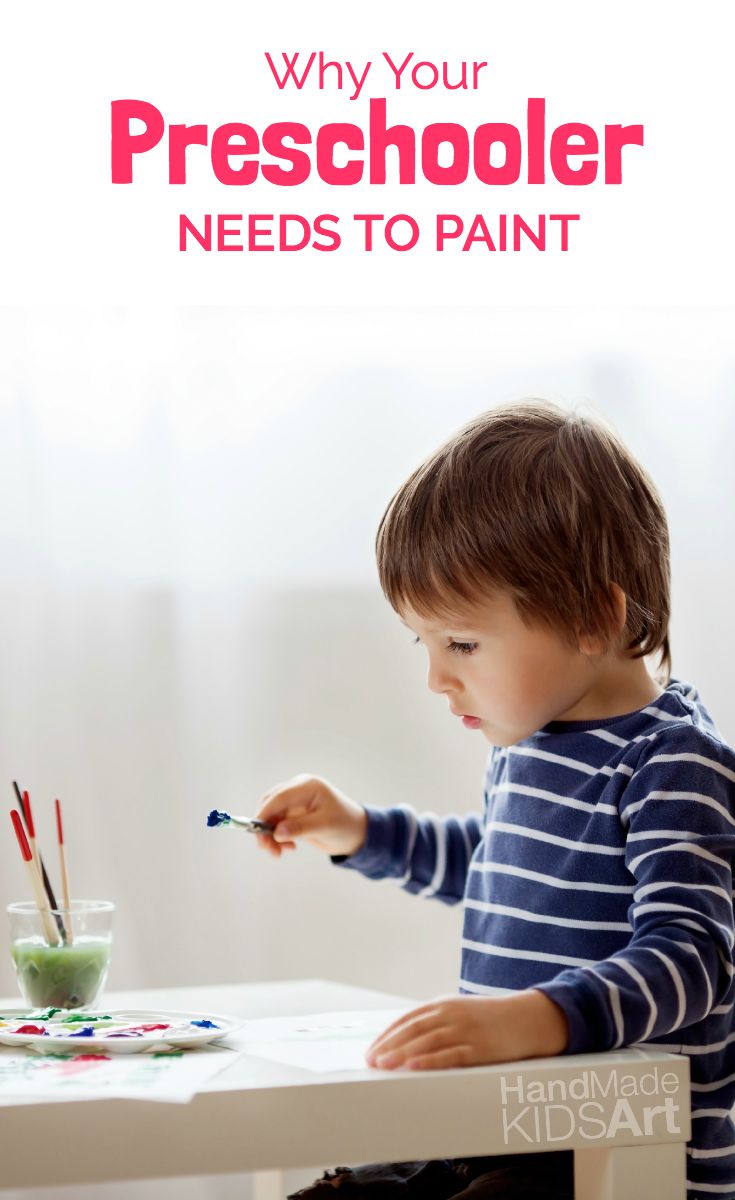You want to paint with your child but how do you keep your preschooler interested for more than a few minutes while controlling the mess?
Paint is messy.
Paint requires more work for you.
Paint requires time.
But did you know painting with your child literally grows their brain?
Many parents work with their preschooler on learning letters, reading books and even incorporating math skills into daily life.
These skills and activities are necessary and beneficial to your preschooler but by adding creative play and activities (like painting) you will help the overall growth of your child’s whole brain.
10 Reasons Why Preschoolers Need to Paint
1. Painting exercises your child’s brain. Creative activities like painting, use a different part of the brain than reading and or math. The right side of the brain is our creative half and responsible for visual skills and understanding what we see through our eyes (which is still developing at the preschool age). Creative play and painting activities help exercise your child’s “right” brain leading to an overall healthy brain development.
Because we are talking science here and I am not an scientist… here are some additional brain related articles if you are looking for more research.
Art with the Brain in Mind | Harvard Educational Review
Brain Development | Parent Provider Partnerships from Purdue University
Brain Balance | Education.com
2. Your child learns how to express their own feelings by transforming their own ideas and feelings onto paper.
3. Painting builds self esteem. By providing open-ended painting activities your child there is no right or wrong way to paint. The emphasis is on the process so every child feels successful no matter there skill level or developmental stage.
4. Your child learns how to make decisions and problem solve. As your child works and paints they make choices about their own artwork.
5. Painting helps relieve stress. Just like adults, preschoolers get stressed too. Painting is one way your child can de-stress and a healthy way to express their feelings.
6. Painting helps develop muscle control. Working with a brush or small tool helps develop fine motor skills (small muscle control). While working on large sheets of paper or at the easel helps develop large muscle control (Gross Motor skills). Painting also helps develop your child’s hand eye coordination.
7. Painting is a sensory experience. Your child is building a knowledge base of different sensory experiences, like how it feels to touch the paper with finger painting or how it feels to move the brush with your arm across the paper. Sensory experiences are important because it helps your child explore and understand the world around them.
8. Painting provides opportunity for your child to experience cause and effect. While painting, your child is also experimenting and thinking like a scientist. Allow your child to mix colors together to try new combinations and explore with the paint and color.
9. Painting helps develop verbal language. Often times preschoolers can’t wait to share with you about their painting. Be sure not to guess what you think your child has painted but rather ask your child, “tell me about your painting”. By asking open-ended questions it will help stretch and grow your child’s thinking and verbal skills.
10. Your child will build self-confidence. Your child will take pride and accomplishment in their painting (even if it looks like scribble scrabble to you).



Leave a Reply